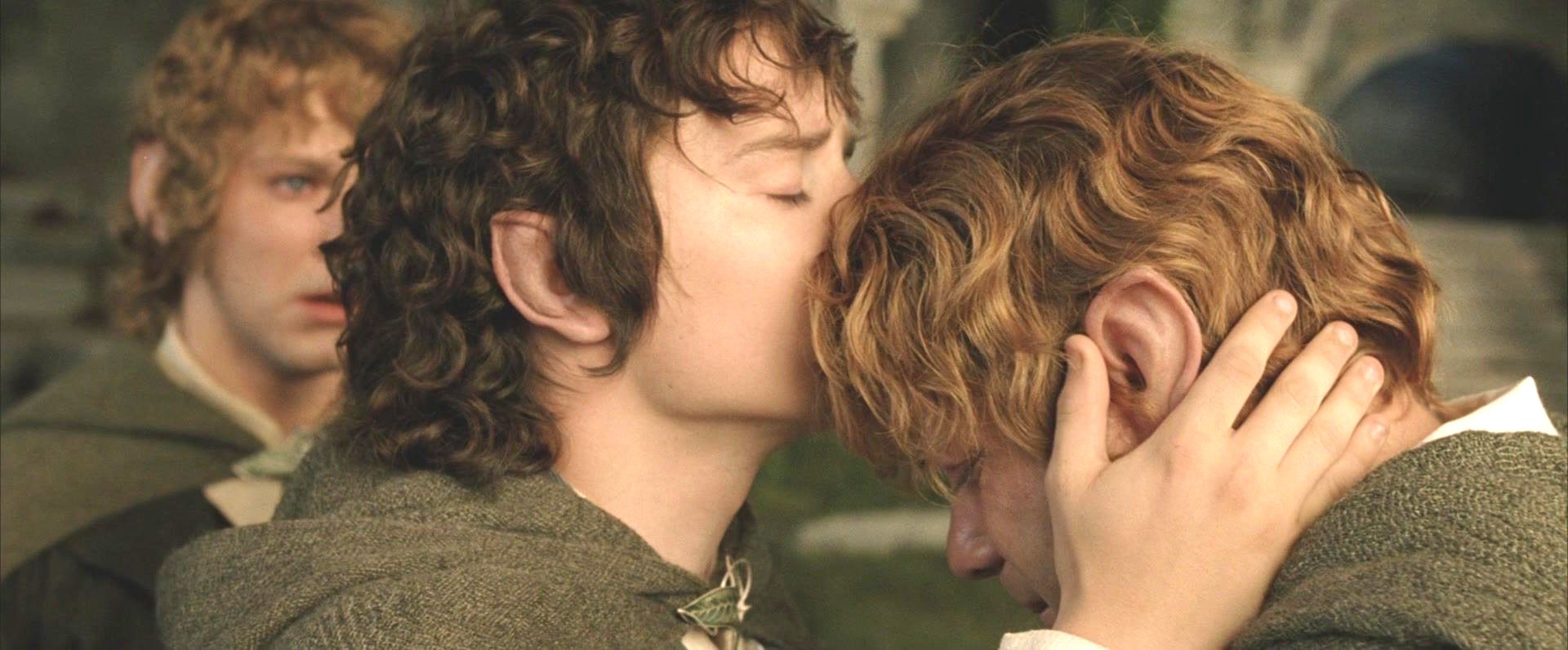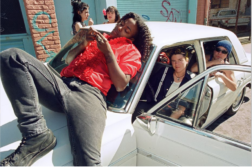THE TECHNOLOGICAL WIZARDRY of Peter Jackson’s film trilogy of The Lord of The Rings has contributed enormously to the worldwide popularity of J.R.R. Tolkien. The Lord of The Rings, a massive book that Tolkien labeled “heroic romance” rather than a novel, was originally published in England in three volumes in 1954 and 1955. The book achieved cult status among college students in the U.S. and England beginning in the 1960s, and book sales soared.
Nevertheless, Tolkien has generally been excluded from “literary” studies at colleges and universities, in part due to derisive attitudes towards the genre of fantasy fiction, which Tolkien referred to as “fairy stories.” On another level, Tolkien’s genius has also been under-recognized because of a powerful undercurrent of same-sex love within the realm of Middle-earth. The homoeroticism of the hobbits, the race of beings that launched Tolkien’s fame, has often been glossed over, denied, and sometimes attacked, albeit obliquely. The revolution in attitudes toward gay and lesbian people in the 21st century offers the chance for a dramatic re-evaluation of Tolkien’s place in the literary canon and a deeper understanding of the gay themes in his books.
The New Zealand filmmaker Peter Jackson capitalizes on a modern sexual sensibility in his three visually stunning film adaptations of The Lord of The Rings, released in 2001, 2002, and 2003. Homoerotic desire is up there on Jackson’s very large screen for all to see. All three films were critically acclaimed, with dozens of Oscar nominations collectively. But while the films have secured Tolkien’s place as a literary giant, the gay themes in these adaptations have engendered controversy. In the decade since the films were released, Tolkien scholarship, far from embracing sexual modernism, has become increasingly repressive. Religious conservatives have dominated published biographies and critical works. Their approach toward homosexuality in Tolkien’s work and in his life has been complete silence.
What, then, is the truth about the author’s treatment of homosexuality in the original The Lord of The Rings? Are Jackson’s films faithful to Tolkien’s vision, or do they augment the story with contemporary sexual attitudes? Equally engaging is the question of the life of Tolkien, and the role that homosexuality played in his relationships with men, especially his attachment to the author C. S. Lewis and the literary circle known as “The Inklings.”
David LaFontaine is professor of English at Massasoit Community College.







